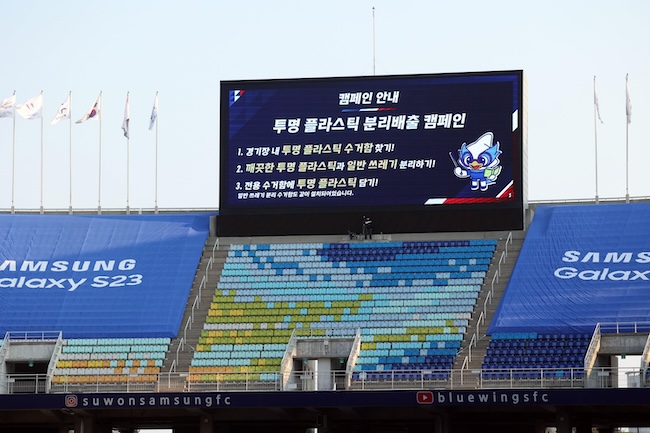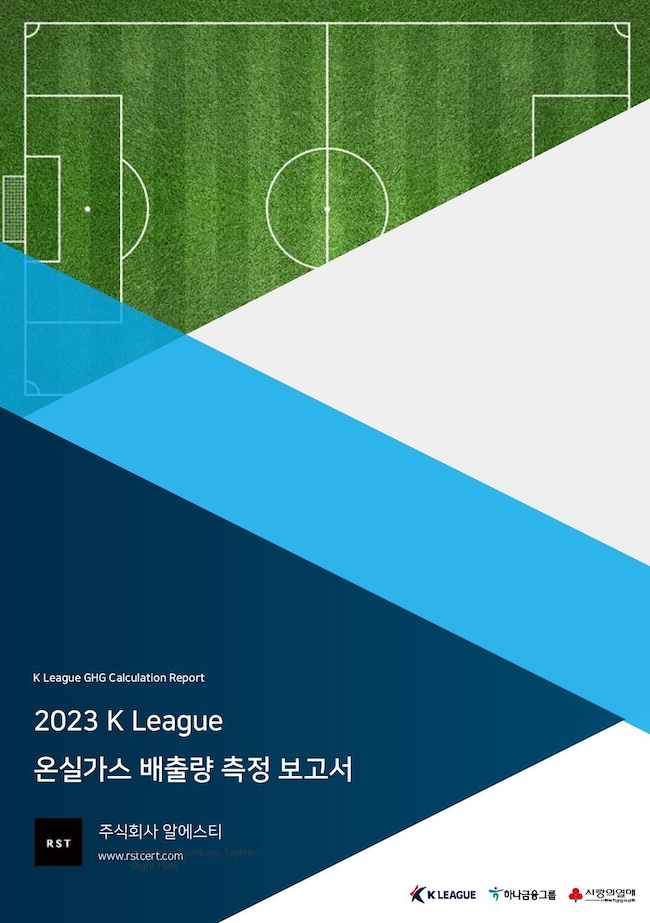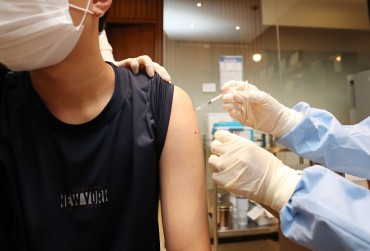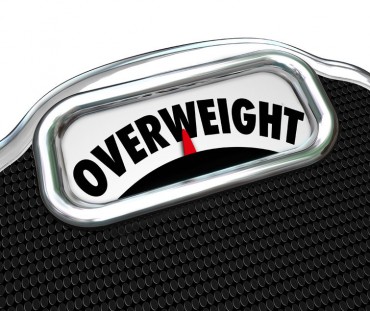
Eco-friendly campaign by Suwon Samsung FC (Image courtesy of the Korea Professional Football League)
SEOUL, Nov. 22 (Korea Bizwire) – South Korea’s professional football league, the ‘K-League,’ has undertaken an eco-friendly initiative by publishing a groundbreaking report that measures the greenhouse gas emissions of each professional team. This marks the first such endeavor among domestic professional sports.
The Korea Professional Football League (KPFL) made the announcement during a regular briefing at the Korea Football Hall in Jongno, Seoul on Tuesday. The report represents the initial step in the KPFL’s mission to accurately measure and ultimately reduce greenhouse gas emissions within stadiums.
Germany’s professional football league, the Bundesliga, has consistently published emissions reports as part of its efforts to reduce greenhouse gas emissions within stadiums.
The K-League’s inaugural greenhouse gas emissions report includes results from nine out of 25 teams, primarily due to infrastructure issues, including a shortage of measuring facilities.
Teams such as the K-League 1′s Daegu FC, Daejeon Hana Citizen, Suwon Samsung, Jeju United, Pohang Steelers, and the K-League 2′s Gimpo FC, Busan I-Park, Ansan Greeners, and Jeonnam Dragons complied with the KPFL’s standards and reported their greenhouse gas emissions based on 2021 data.
The KPFL categorized emissions into ‘Scope 1′ and ‘Scope 2.’ ‘Scope 1′ covers emissions directly produced by the use of fossil fuels in facilities and vehicles operated and managed by each team, while ‘Scope 2′ deals with indirect emissions calculated during the process of purchasing energy, such as electricity.
Among the teams, Pohang, Daegu, and Jeonnam were the only three that measured all Scope 1 and 2 emissions at stadiums, clubhouses, and offices. Jeonnam showed the lowest emissions at 455.2 tCO2eq, followed by Daegu at 569.8 tCO2eq and Pohang at 602.7 tCO2eq.
Daejeon emitted the lowest greenhouse gases at the stadium at 47.4 tCO2eq, while Suwon reported the highest at a clubhouse at 531.3 tCO2eq.
The KPFL classified greenhouse gas emissions resulting from the activities of interested parties, including fans’ movements and the operation of food trucks, as ‘Scope 3′ but did not include these statistics in the report due to difficulties in collecting quantified data.
The KPFL emphasized the necessity of objective standard data for environmental management and highlighted the need for cooperation from municipal governments, the main entities in stadium operations, to secure greenhouse gas emissions data in Scope 1 and 2.
M. H. Lee (mhlee@koreabizwire.com)







